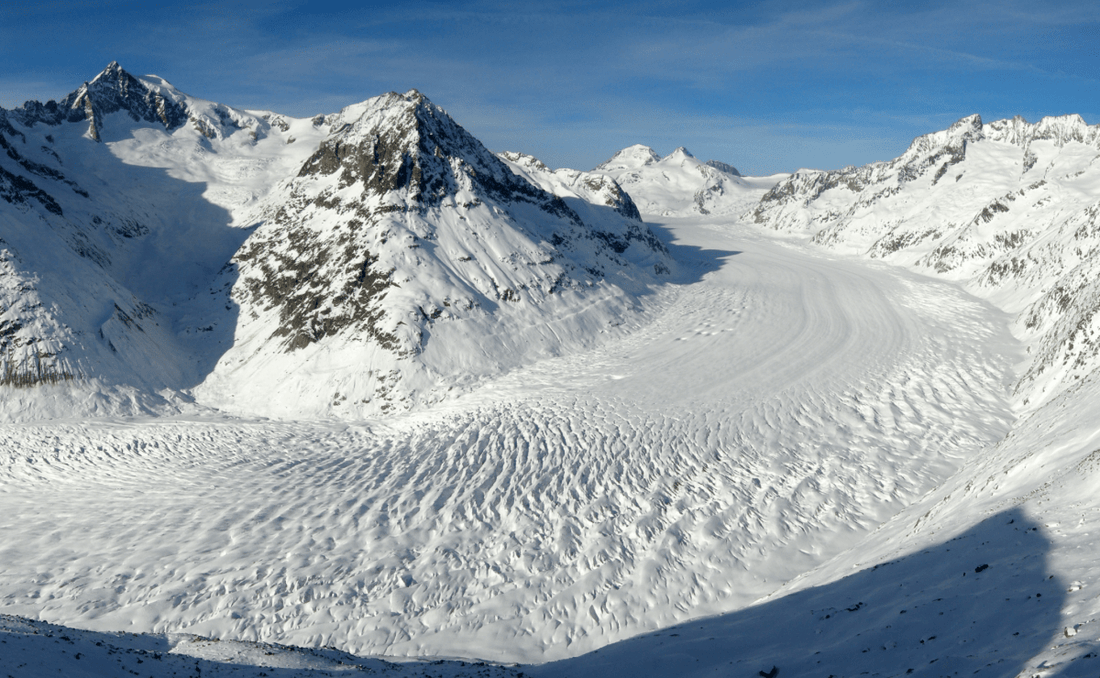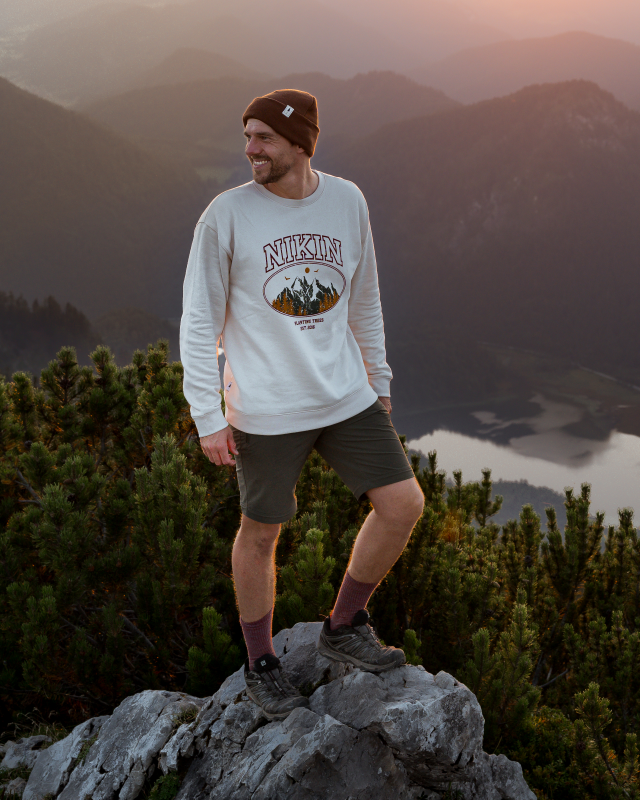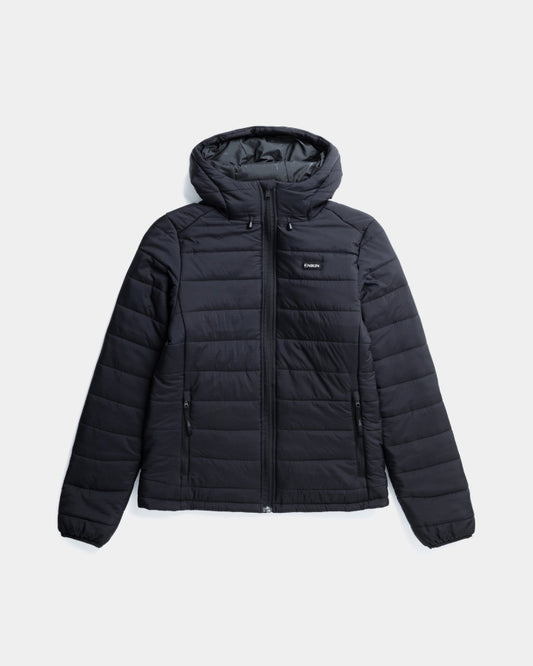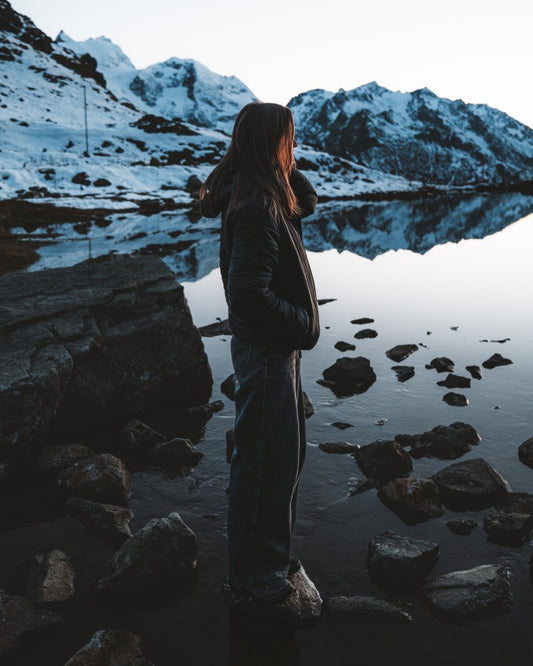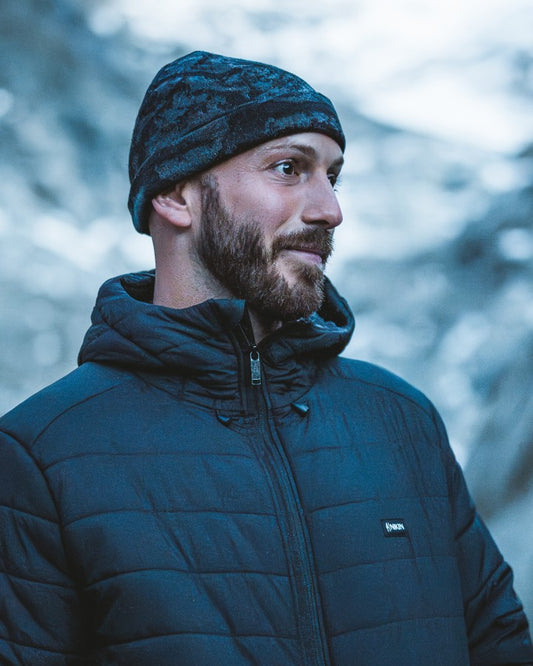Climate change is real and devastating natural disasters are becoming more and more frequent. Entire areas of forest are burning, animal species are dying out - and there is another event that is happening very slowly but has serious consequences: the melting of the glaciers.
Climate change is real and devastating natural disasters are becoming more and more frequent. Entire areas of forest are burning, animal species are dying out - and there is another event that is happening very slowly but has serious consequences: the melting of the glaciers.
Aletsch Glacier, Switzerland
At NIKIN , we are particularly committed to protecting forests worldwide. However, it is not only forests that are disappearing, but also glaciers - global warming is having fatal consequences due to the water stored in the ice, which is being released ever faster and causing sea levels to rise. These consequences not only affect nature and the environment, but also us humans. We are being starved of water - and that is why it is essential to stop this rapid glacier retreat.
What are glaciers?
Glaciers are masses of ice that form from compressed snow. It is hard to imagine the incredible masses of snow required to create the largest glaciers. Various conditions must be met for a glacier to form at all. The most important of these is that there must be sufficient snowfall every year for a very long time. The snow must fall in such large quantities that less melts than remains. So a little snow is added every year. In large quantities, the lightweight snowflake becomes a load weighing tons. The lower layers are gradually compressed and turn to ice.
Always on the move
As glaciers form far above the snow line, i.e. in mountainous regions, another element is added - movement. The heavy load of ice does not stay where it is, but slides downhill. Only centimeters at a time, but noticeably. In the process, the ice masses shape, drag and scrape the landscape, carrying huge boulders and other material with them, which remains long after the glacier has ceased to exist. The traces of the last ice age can still be seen in Central Europe, which is now warm again.
Glaciers - they are the biggest!
Due to their compressed water masses, glaciers are the largest water reservoirs after the oceans - and therefore have a significant influence on the global climate. The largest glaciers in the world are:
- the world's largest glacier is the Lambert Glacier in East Antarctica
- Iceland's Vatnajökull is the largest glacier in Europe
- the Jostedalsbreen in Norway is the largest glacier on the European mainland
- the longest in Switzerland is the Aletsch Glacier
- the Malaspina Glacier in Alaska is the largest glacier outside the polar region
- In the tropical zone, the Peruvian Quelccaya is the largest glacier
- Campo de Hielo Sur is the largest glacier in South America
- In Germany, the Schneeferner is number one
- in Austria, the Pasterzen glacier is the largest
- In the Caucasus, the home of high mountains, the Bezengi is the largest ice mass
Breiðamerkurjökull (Vatnajökull), Iceland
Swiss glaciers - acutely threatened!
Switzerland has a lot to offer in the way of glaciers. They are part of our landscape, but are acutely threatened by climate change. The Aletsch Glacier is a UNESCO World Heritage Site, but the Rhone, Fee and other glaciers are also Swiss landmarks. In the last two decades, the ice giants, which previously pushed down into the valley by the centimetre, have retreated - often by several kilometers. Climate protection in Switzerland is also and above all glacier protection. Almost seven hundred glaciers are said to have already disappeared - the phenomenon is so striking that environmental activists have already held funeral marches for "dead" glaciers.
Why are the glaciers disappearing?
The ice masses are naturally suffering from the rising temperatures worldwide. The lack of snowfall is at least as devastating - because the glaciers are no longer "fed". As a result, more ice is melting than can be formed. The glacier regresses, so to speak. According to experts studying the future of Swiss glaciers, most of the smaller glaciers will have disappeared by 2050. Fifty years later, only parts of the larger glaciers will still exist. This will affect the water balance and the stability of the rock and soil layers in the mountains, as well as the fauna and flora.
Protecting glaciers through climate protection!
A global rethink is needed to preserve the world's glaciers as a unique biotope. It does not help to debate for years. Every single person has a responsibility. And that means we have to become more sustainable in our consumer behavior and lifestyles. It won't work without doing without - but if we look beyond our own small environment, we can preserve the wonders of our world for our children and grandchildren. We at NIKIN would like to work towards this.





